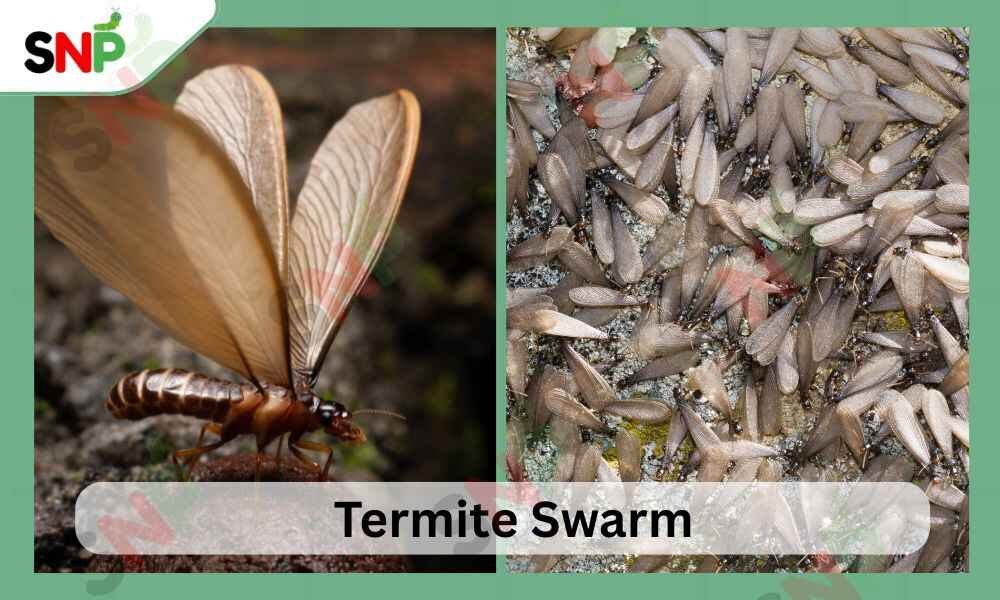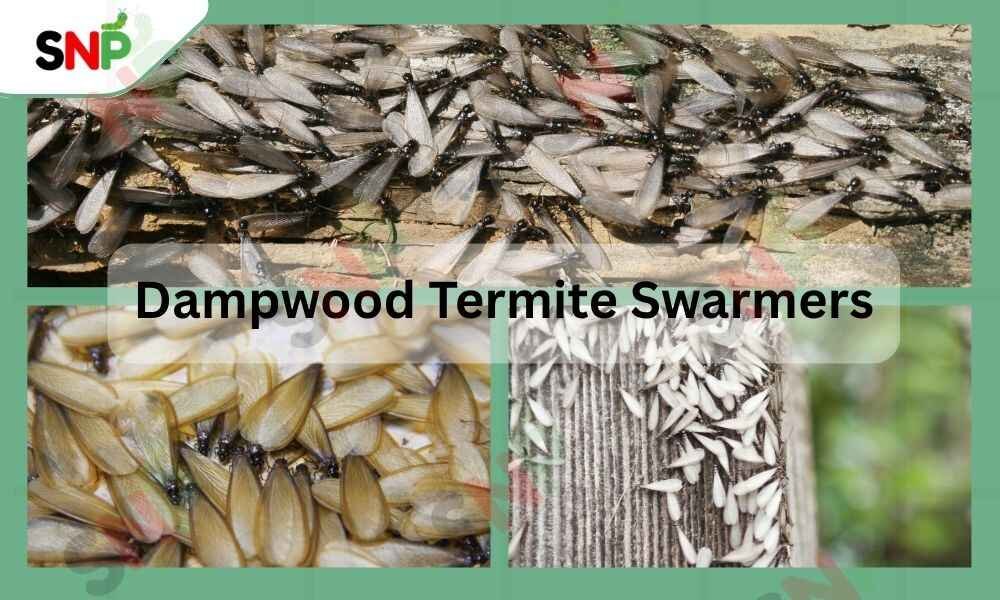It could have happened that you noticed your windows or porch lights surrounded by a sudden cloud of insects and then found out that it was a swarm of termites. Although the idea of a flying termite swarm can be very scary, knowing about the behavior of the flying insect swarm is pivotal if you want to protect your house and become a smart consumer in the market of pest control.
This piece of writing concentrates on the parts of the whole story of the insect pests which include the questions such as the time when the insects of the species of termites go in swarms, the typical season of the swarming of the insects, how long the swarm will be there, whether it is a good or bad sign if we see the insects flying in a group inside our house, and the info on the species of the termites called “Dampwood Termite Swarmers” that are the members of a reunion.
What Is a Termite Swarm?
A termite swarm is the consequence of the typical life cycle of the species of termites. If a colony is fully grown and the environmental conditions are perfect, then the wing reproductive termites take flight in large numbers. Such a flight of the flying insects is nature’s physiological way of allowing the termites to impregnate and create new families. The words “alates” and “swarmers” are often use interchangeably to describe flying reproductive termites. While the primary role of local workers and soldiers is to maintain the present colony, the role of reproductive swarmers is to disperse and thus continuously supply the population with new colonies.

When Do Termites Swarm?
One of the most basic issues the homeowners consider is when do termites swarm. Of course, the answer lies in the species of the termite and in the region where you live. Major termite swarm incidents in the U.S.A. are observe during spring or early summer, especially after a rainfall when the air is humid and the ground is moist. Subterranean termites, which are the most destructive ones, normally swarm during the day in spring. Drywood termites usually prefer the late summer or early fall period for their nocturnal swarming activities. Dampwood Termite Swarmers are typically active during the summer.
Understanding the Termite Swarming Season
The termite swarming season is a time when these insects have the chance to double their numbers. The termite swarming season in the US starts from February to June, with some alterations according to local climate and the presence of different termite species. Subterranean termites generate the vast majority of infestations and are mostly active during this time. On the other hand, Dampwood Termite Swarmers will be more frequent in the summertime, particularly in places with high humidity.
How Long Do Termites Swarm?
If you see a swarm of flying termites, the first thing that may come to your mind is how long the swarm will last. It is not a long time. A normal termite swarm is only 30 to 40 minutes; in some cases, it can be up to an hour. Nevertheless, the act is short, but the process of swarming can performed a few times during the termite swarming season because the quotas of the reproductive species are release in waves for mating and picking up new places. The duration of the event is still short, but it is very crucial for termite reproduction, and the real danger lies in the potential of these reproductive swarmers that can make new colonies inside or outside your home.
Termites Swarming Inside House: What Does It Mean?
The sighting of termites flying in your house can compared to raising a red flag. Out of door swarms may only a signal of the presence of the colonies next door; however, the presence of an indoor swarm is an indication that the mature queen is there, the colony has very big population, the whole infrastructure of the nest is already built, and is continually developing inside the home’s structure. These swarmers are attract to light; therefore, you are most likely to find them around windows or light fixtures. In case you find wings of insects or dead insects indoors in clusters, it is imperative to call a pest control professional without any delay. Structural damage that may happen due to this situation can be very costly to fix in case the problem is ignore for some time.
Spotlight on Dampwood Termite Swarmers

Dampwood Termite Swarmers: This species of insect is very interesting because its larvae enjoy wet decaying wood. They do not invade houses as readily as do underground or drywood termites; however, they can also prove very devastating, particularly in those locations where the wood is always wet, caused by leakage or drainage problems. The swarmers in this species are larger than compared in other species of termites, and they swarm during summer. If you live in the Pacific Coastal States or you have wood that is in ground contact, you are well advise to extra careful and seek out such moisture-loving pests.
Conclusion: Protect Your Home with SayNoPest
A termite swarm is, unfortunately, more than just an irritating little thing—it actually can be the indicator that your property has a hidden problem. Learning to recognize the signs of a flying termite swarm, deciding when termites swarm, and knowing the rules of termite swarming season may provide you with an opportunity to react in due time. If it occurs to you to see the presence of next to no termites swarming inside your house or you are sure that there are some Dampwood Termite Swarmers, call the pest control experts as soon as possible.
Professional help combined with early detection provides the opportunity to keep away exhaustive damage caused by termites.
We at SayNoPest are devote to supporting American homeowners in being informe and protect. Contact me today in case of any professional guidance or examination. You can lose your sleep over a termite swarm, but with SayNoPest to protect your dwelling through the year, that is not going to happen.
